Abstract
An isolate of Fusarium oxysporum Schlecht, emend. Synd. et Hans. N17B isolated from a grassy area in Lakselv, Norway (Arctic region) produced a toxin in culture when grown on rice in the laboratory. This new toxin, which was given the trivial name of H-1 (indicating hemorrhagic factor), caused toxic effects in rats, including food refusal, weight loss, hemorrhage in the stomach, intestines, heart, and thymus, and finally death. The UV spectrum of H-1 showed 210, 254, and 292 nm as absorption maxima. The infrared spectrum showed carbonyl groups at 1,675 and 1,750 cm-1 and an ether group at 1,215 cm-1. H-1 does not fluoresce under short- or long-wavelength UV light and exists as fluffy, white crystals that turn yellow when subjected to basic reagents such as ammonium hydroxide or tetraethylenepentamine. Elemental and accurate mass determinations in both electron impact and positive chemical ionization indicate an empirical formula of C23H24O8. Its mass spectra (electron impact, chemical ionization, and fast atom bombardment [FAB]) show a molecular ion of 428 and major fragments at m/z+ 386, 368, 355, and 295. H-1 was found to be identical to the antibiotic called wortmannin which is produced by Penicillium wortmannii and Myrothecium roridum. This is the first report of the synthesis of wortmannin by species of the genus Fusarium.
Full text
PDF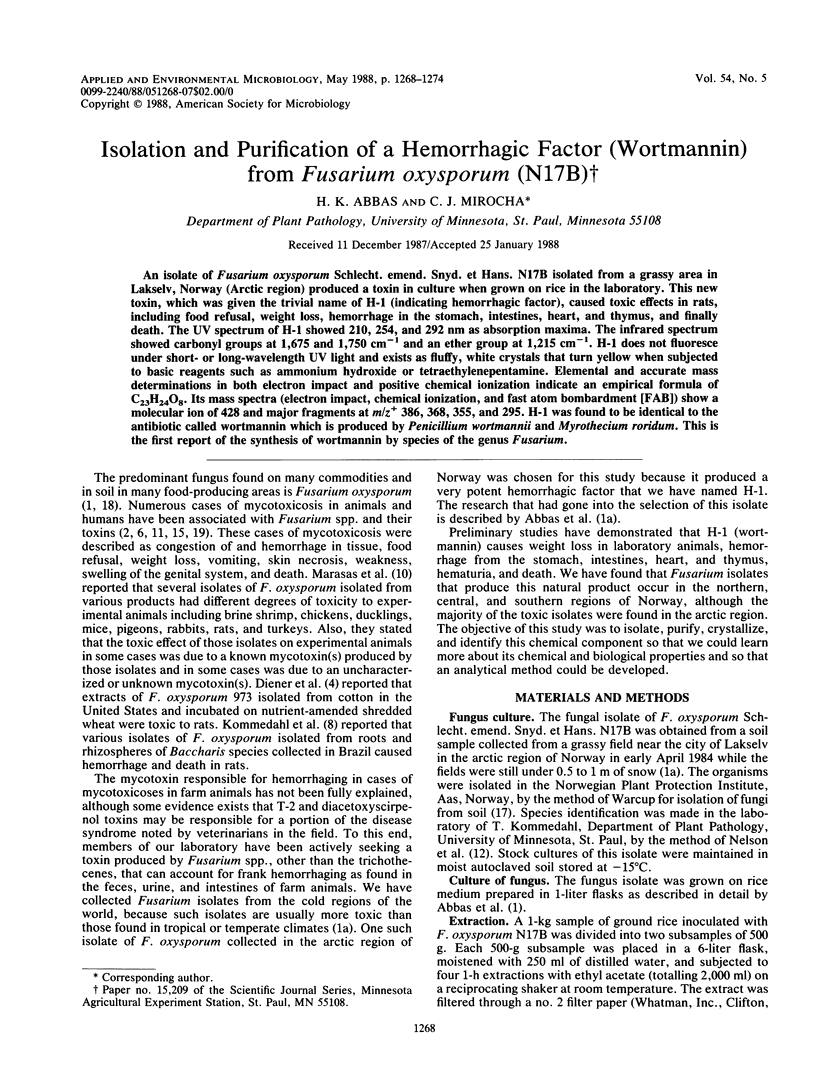
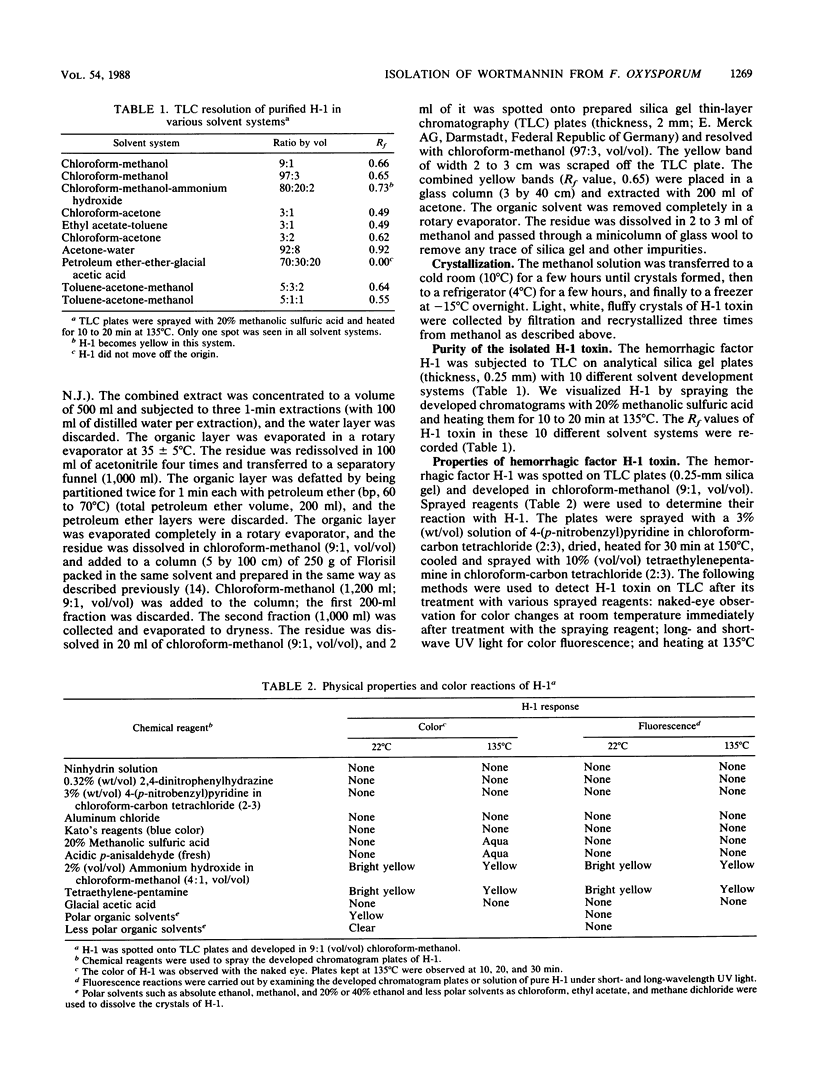
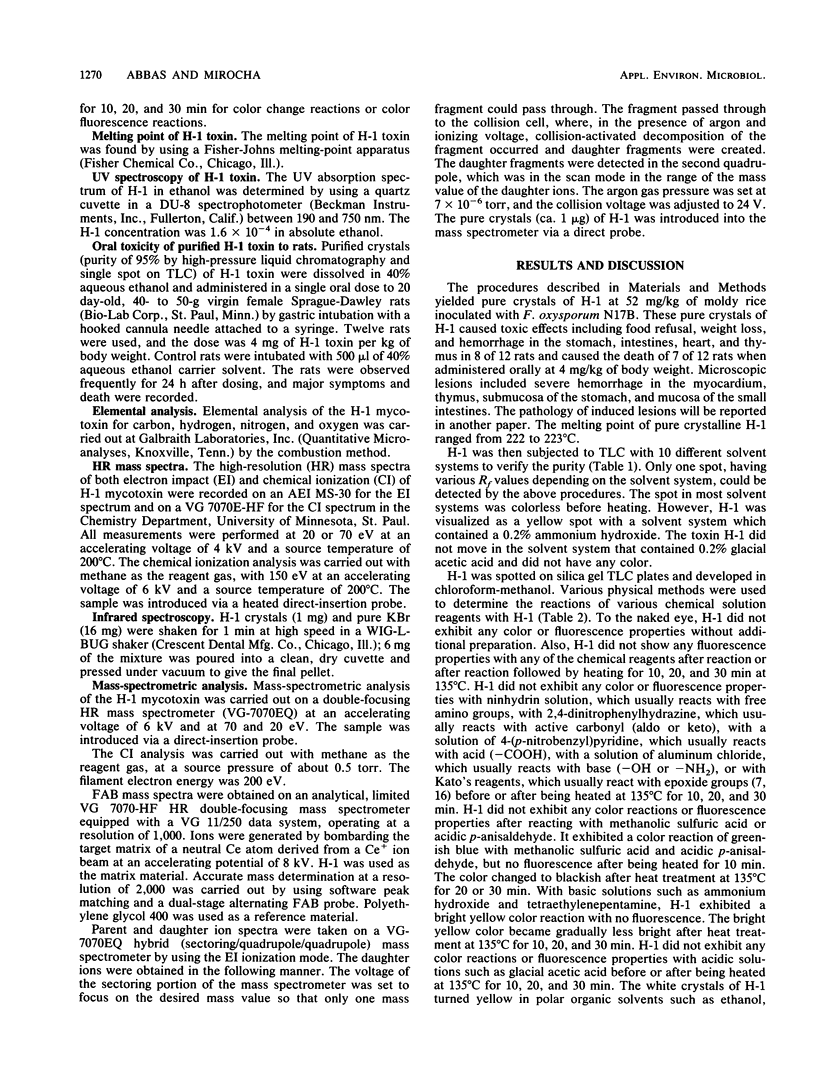
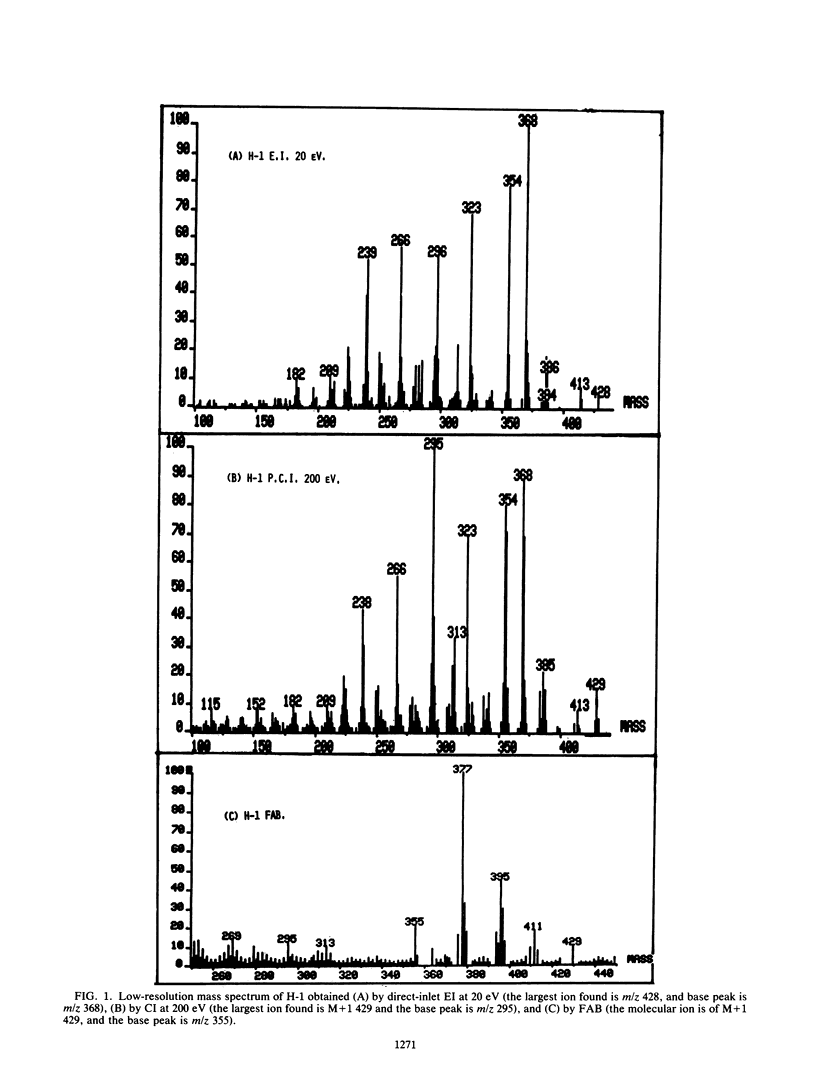
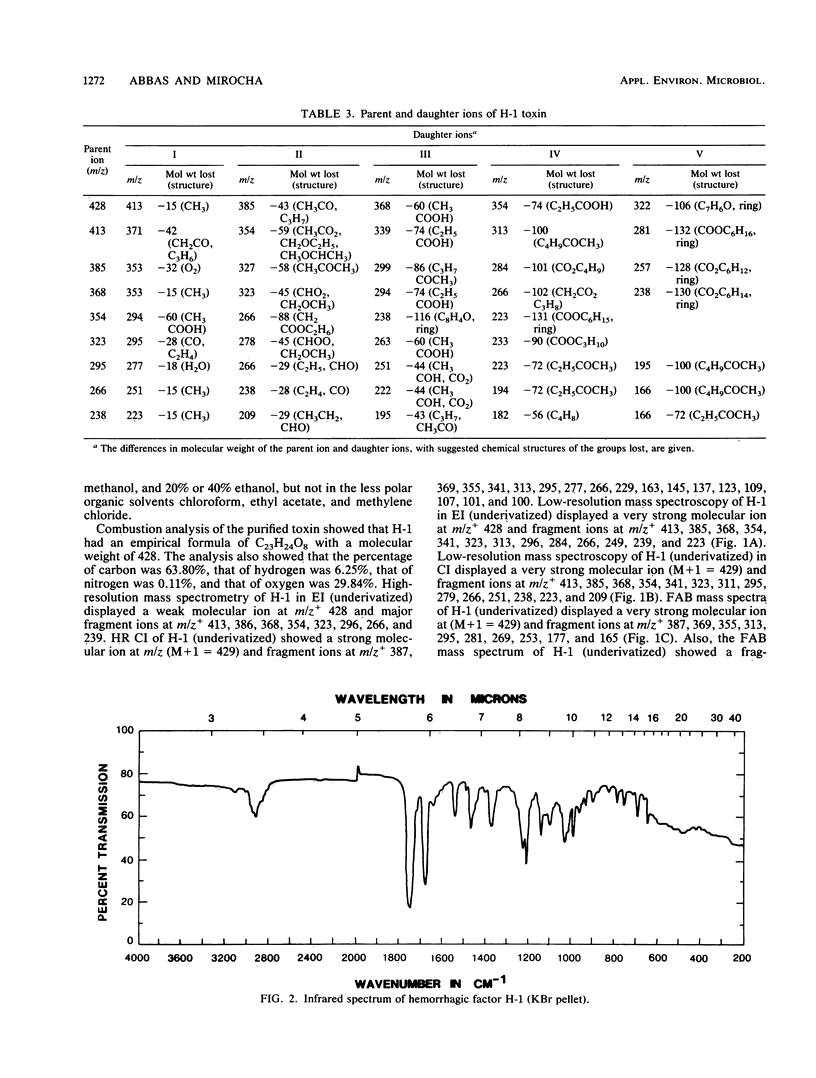
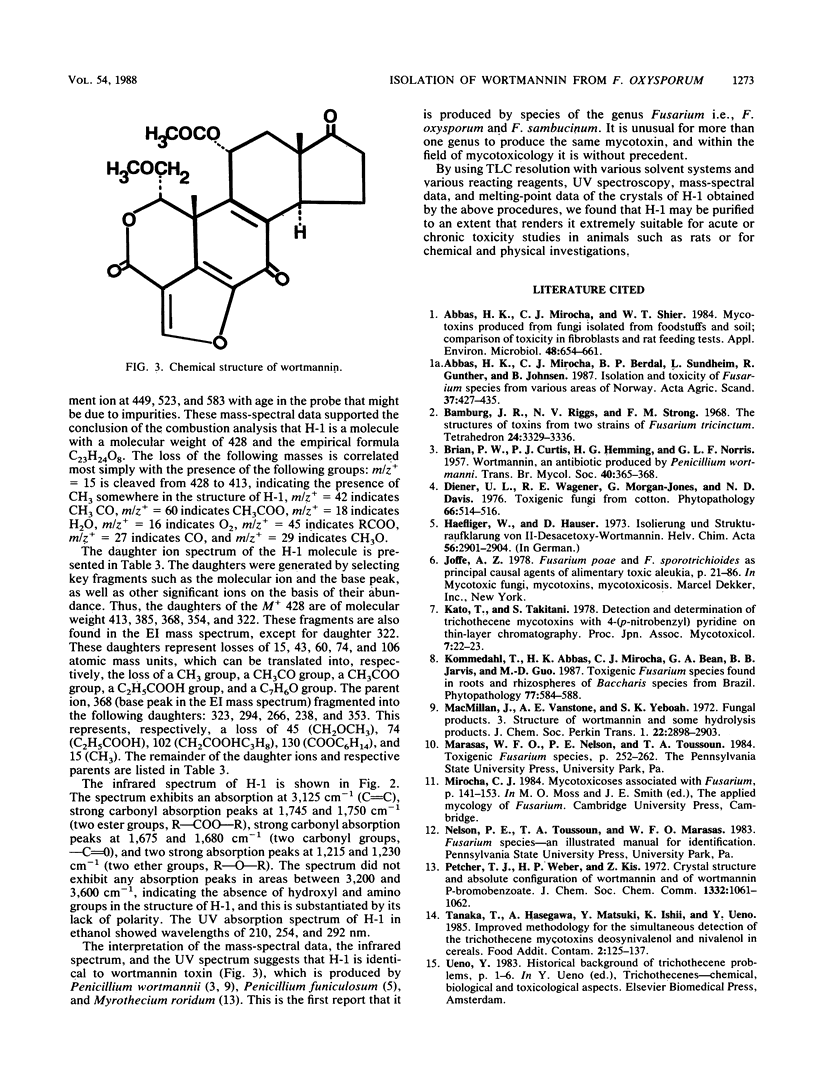
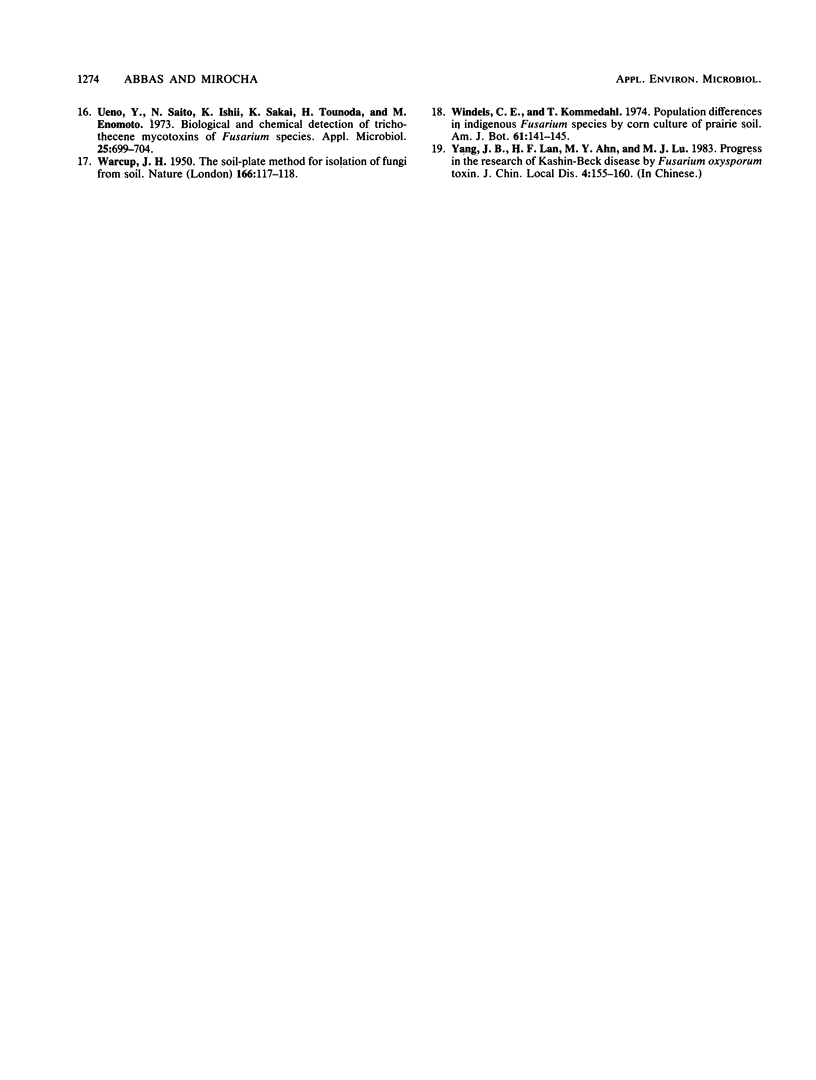
Selected References
These references are in PubMed. This may not be the complete list of references from this article.
- Abbas H. K., Mirocha C. J., Shier W. T. Mycotoxins produced from fungi isolated from foodstuffs and soil: comparison of toxicity in fibroblasts and rat feeding tests. Appl Environ Microbiol. 1984 Sep;48(3):654–661. doi: 10.1128/aem.48.3.654-661.1984. [DOI] [PMC free article] [PubMed] [Google Scholar]
- Bamburg J. R., Riggs N. V., Strong F. M. The structures of toxins from two strains of Fusarium tricinctum. Tetrahedron. 1968 Apr;24(8):3329–3336. doi: 10.1016/s0040-4020(01)92631-6. [DOI] [PubMed] [Google Scholar]
- Haefliger W., Hauser D. Isolierung und Strukturaufklärung von 11-Desacetoxy-wortmannin. Helv Chim Acta. 1973;56(8):2901–2904. doi: 10.1002/hlca.19730560828. [DOI] [PubMed] [Google Scholar]
- Tanaka T., Hasegawa A., Matsuki Y., Ishii K., Ueno Y. Improved methodology for the simultaneous detection of the trichothecene mycotoxins deoxynivalenol and nivalenol in cereals. Food Addit Contam. 1985 Apr-Jun;2(2):125–137. doi: 10.1080/02652038509373534. [DOI] [PubMed] [Google Scholar]
- Ueno Y., Sato N., Ishii K., Sakai K., Tsunoda H. Biological and chemical detection of trichothecene mycotoxins of Fusarium species. Appl Microbiol. 1973 Apr;25(4):699–704. doi: 10.1128/am.25.4.699-704.1973. [DOI] [PMC free article] [PubMed] [Google Scholar]
- WARCUP J. H. The soil-plate method for isolation of fungi from soil. Nature. 1950 Jul 15;166(4211):117–118. doi: 10.1038/166117b0. [DOI] [PubMed] [Google Scholar]


